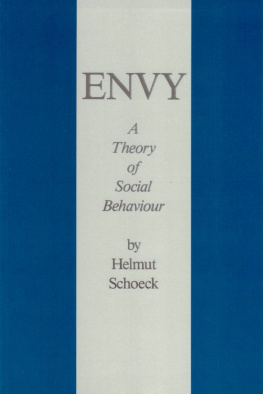The International Library of Sociology
THEORY OF COLLECTIVE BEHAVIOUR
The International Libary of Sociology
THE SOCIOLOGY OF BEHAVIOUR AND PSYCHOLOGY
In 18 Volumes
I | The Development of Conscience | Stephenson |
II | Disaster | Wolfenstein |
III | The Framework of Human Behaviour | Blackburn |
IV | Frustration and Aggression | Dollard et al |
V | Handbook of Social Psychology | Young |
VI | Human Behaviour and Social Processes | Rose |
VII | The Human Group | Homans |
VIII | Learning Through Group Experience | Ottaway |
IX | Personality and Problems of Adjustment | Young |
X | Psychology and the Social Pattern | Blackburn |
XI | The Sane Society | Fromm |
XII | Sigmund Freud An Introduction | Hollitscher |
XIII | Social Learning and Imitation | Miller et al |
XIV | Society and Nature | Kelsen |
XV | Solitude and Privacy | Halmos |
XVI | The Study of Groups | Klein |
XVII | Theory of Collective Behaviour | Smelser |
XVIII | Towards a Measure of Man | Halmos |
THEORY OF COLLECTIVE BEHAVIOUR
by
NEIL J. SMELSER
First published in 1962
by Routledge
Reprinted in 1998 by Routledge
2 Park Square, Milton Park, Abingdon, Oxon, OX14 4RN
Transferred to Digital Printing 2007
1962 Neil J.Smelser
All rights reserved. No part of this book may be reprinted or reproduced or utilized in any form or by any electronic, mechanical, or other means, now known or hereafter invented, including photocopying and recording, or in any information storage or retrieval system, without permission in writing from the publishers.
The publishers have made every effort to contact authors/copyright holders of the works reprinted in The International Library of Sociology.
This has not been possible in every case, however, and we would welcome correspondence from those individuals/companies we have been unable to trace.
British Library Cataloguing in Publication Data
A CIP catalogue record for this book is available from the British Library
Theory of Collective Behaviour
ISBN 0415177995
The Sociology of Behaviour and Psychology: 18 Volumes
ISBN 0415178347
The International Library of Sociology: 274 Volumes
ISBN 041517838-X
Publishers Note
The publisher has gone to great lengths to ensure the quality of this reprint but points out that some imperfections in the original may be apparent
For Helen
who has taught me that both conflict and stability are essential for growth
Preface
Gordon W. Allport of Harvard first introduced me to the study of collective behavior. When I was a freshman in 1948, his introductory course in Social Relations set my mind working. Later, when I was a graduate student in 1955, he reactivated and deepened these workings. During the years after studying with him his words have returned to haunt me. So far as I know, he is unaware of my intellectual debt; I should like to record it now.
In working on my doctoral dissertation1 I delved into the collective protests of the British working classes in the late eighteenth and early nineteenth centuries. In trying to decipher the content and timing of these eruptions, I came to be deeply impressed with the explanatory potential of a distinctively sociological approach. The idea of attempting a theoretical synthesis of collective behavior came to me in the summer of 1958. Since then I have worked continually on this volume.
Between 1959 and 1961 I was a member of the Center for Integrated Social Science Theory at the University of California, Berkeley. Known familiarly as the Theory Center, this group consisted of six or seven scholars from various departments. Each member was relieved of academic duties for one semester in each of his two years in the Center. At meetings we discussed theoretical issues arising from the work of one or more members. We had no office for meetings; we wandered peripatetically from one members study to another. We had no secretary, no research assistants, no stationery with letterhead. Simple as it was, the Theory Center had unparalleled value. With the advance of academic specialization in the mid-twentieth century, few things can be more salutary than to have scholars take temporary leave from the confines of their research projects to discover the minds of others in an unhurried atmosphere.
In the Theory Center we read one anothers work with great care and did not fear to fire broadsides when the occasion demanded. My work on collective behavior received and gained immensely from merciless criticism. I should like to thank the following men, members whose tenure overlapped with mine: Frederick E. Balder-ston (Business Administration); Jack Block (Psychology); Julian Feldman (Business Administration); Erving Goffman (Sociology); Austin C. Hoggatt (Business Administration); Leo Lowenthal (Sociology and Speech); Richard S. Lazarus (Psychology); William Petersen (Sociology); Theodore R. Sarbin (Psychology); and David M. Schneider (Anthropology, now at the University of Chicago). In addition, I profited from informal explorations with Professors Lazarus, Petersen, Block, and Sarbin.
Herbert Blumer of the University of California, Berkeley, deserves a special word. His own pioneering work on collective behavior is well known; reading it stimulated me to new lines of thought. More directly, he gave me his extraordinarily painstaking criticism of an earlier draft of . I would hesitate to estimate the time and energy he devoted to writing long, detailed memoranda and to conversing with me after I had responded to these memoranda. It is only candid to report that on points of principle we were frequently at loggerheads. But his thoroughness and his keen ability to locate weaknesses in reasoning led me to revise the early chapters extensively. Several other colleagues at Berkeley offered helpful comments on the manuscriptReinhard Bendix, William Korn-hauser, Seymour M. Lipset, and Hanan C. Selvin.
The influence of Talcott Parsons of Harvard on my intellectual developmentinfluence which can be seen in these pagesbegan more than a decade ago. Even though we now stand at opposite ends of the nation, we have managed to continue periodic discussions during the past several years. His comments were especially helpful for . Finally, Guy E. Swanson of the University of Michigan and Jan Hajda of Johns Hopkins wrote critical comments on the manuscript. Responsibility for all the ideas in this book is of course mine; but in the formation of these ideas all these men had an important place.











